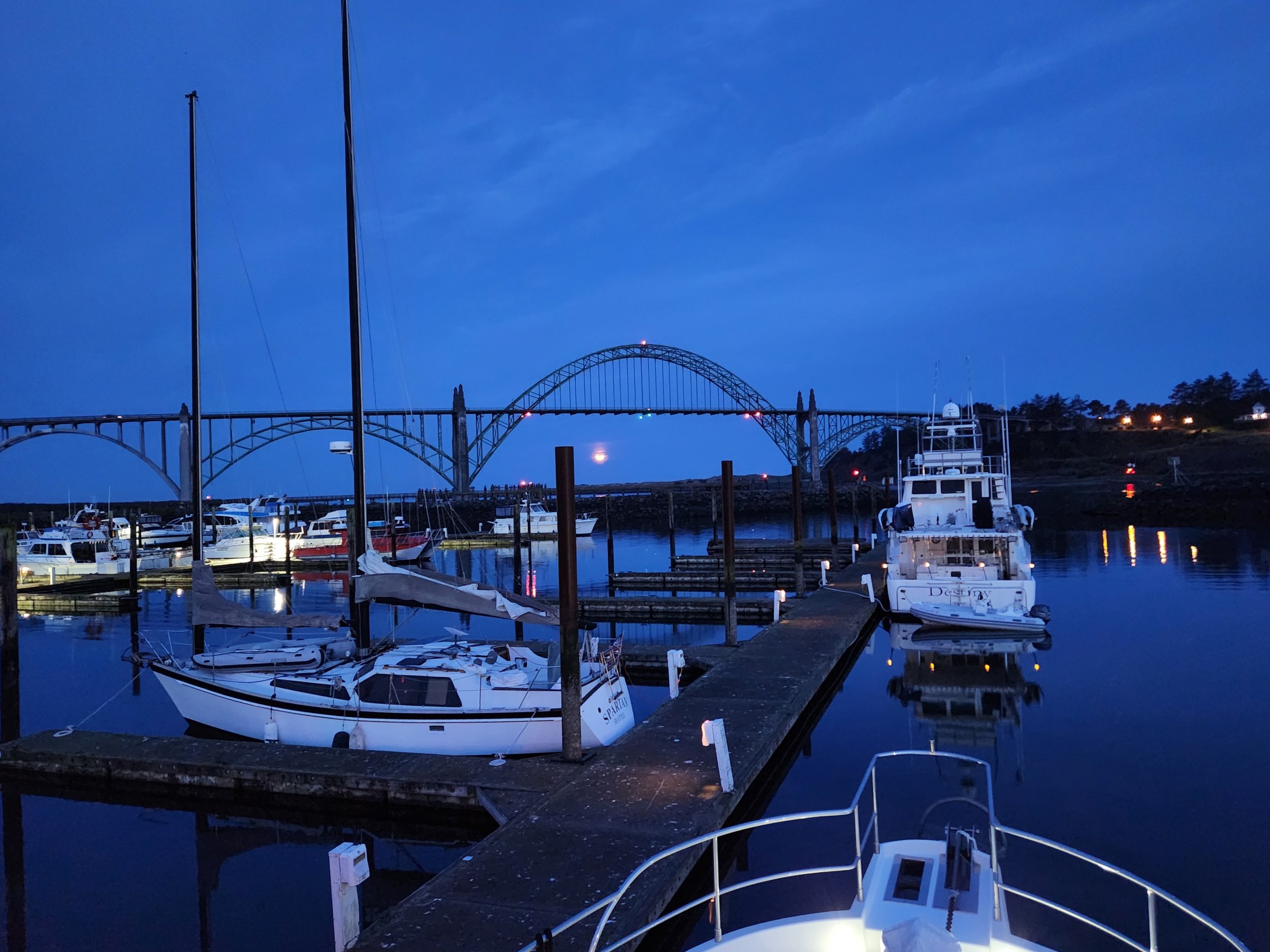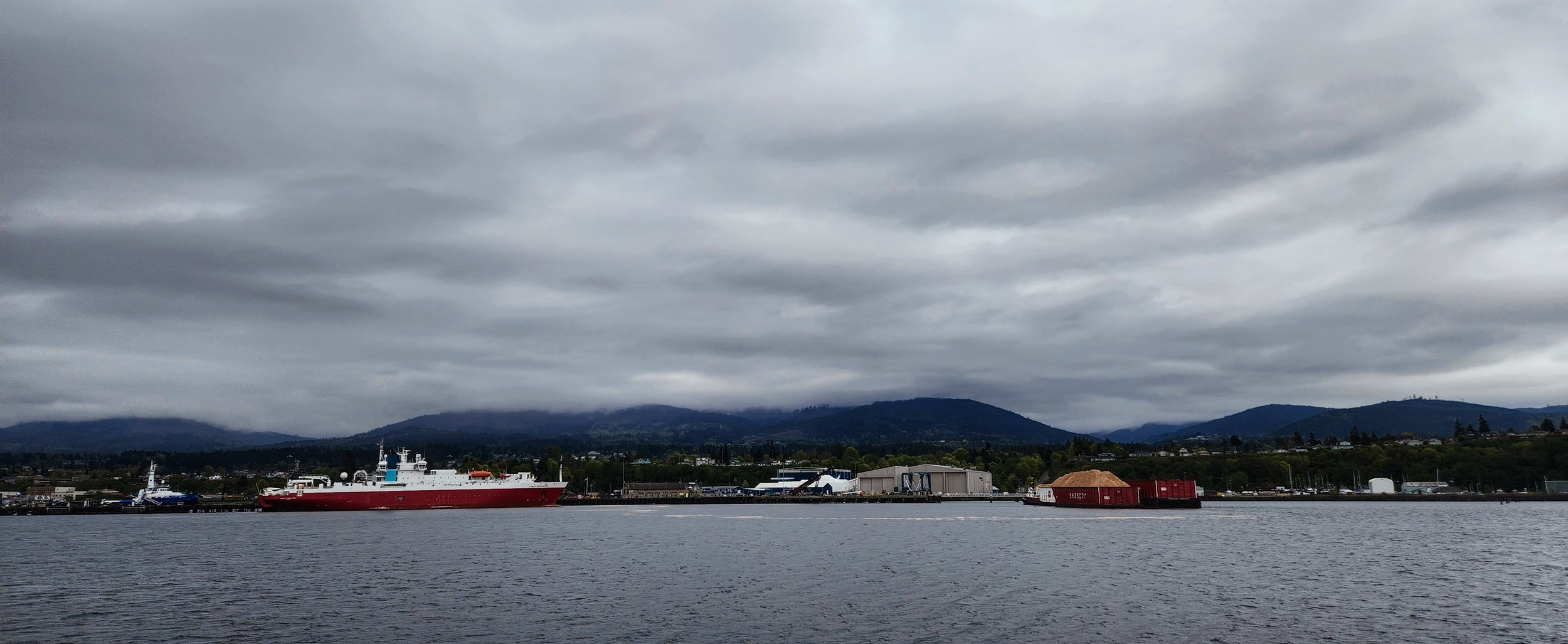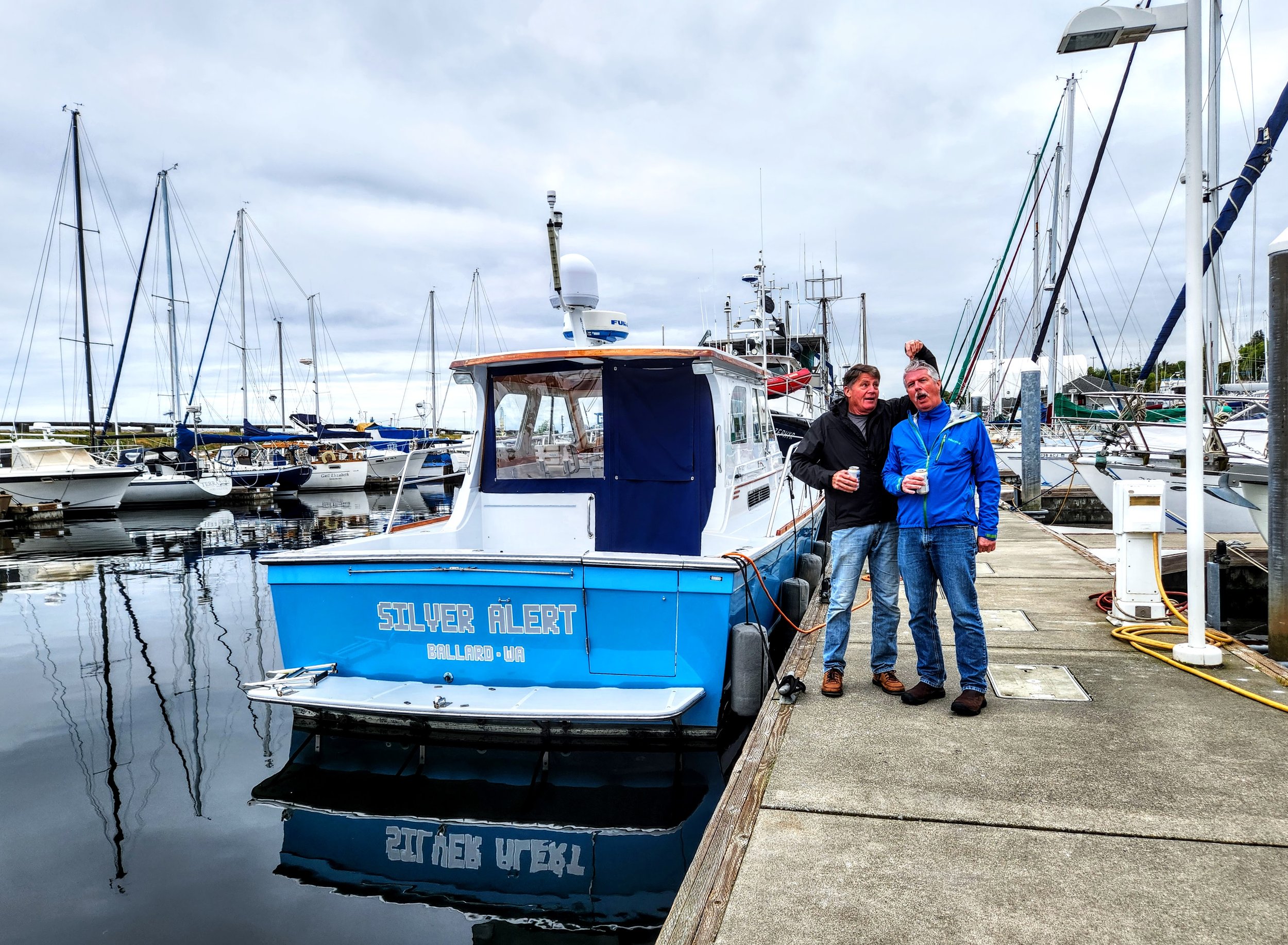Newport, OR to Port Angeles, WA
Well, it wasn’t the Kraken, but it sure felt like that is what had hold of the boat for 10 out of the last 35 hours of transit (341NM). Leaving Newport Harbor while the moon was setting over Yaquina Bay, gave no indication as to what was in store for us. Larry had done extensive weather research and knew that the first few hours would be uncomfortable but nothing worse than ‘The Bash’ coming up from Cabo San Lucas last year. The first few hours saw expected wave heights of five feet at acceptable intervals, but the advance reports of the winds calming north of the Columbia River were not accurate and conditions actually worsened, as wave heights increased and intervals shrank. Our little ship was tossed and bashed by five to seven foot seas. The tender groaned and squeaked in her cradle, while the contents of the galley pitched about tossed. The refrigerator (latched and bungeed) would pop open regularly, making me do the dangerous ‘Nordhavn two-step’ to re-secure it. I considered using my night-guard to protect my teeth in case I landed face first during one of these graceless events. Larry remained at the helm, varying throttle speeds for 10 hours, making sure we didn’t crash down too hard off the crest of the waves. Finally, after the sun went down, somewhere north of Westport, WA the wind began to calm and then thankfully the water did as well.
Of course, I hear you all asking what any rational person would ask, “Why didn’t you wait a day or two?”. Well, as happens, the weather reports were not accurate and we really wanted to get the coastal transit over with. Thankfully, Nordhavn boats are incredibly built and made for the conditions we endured. The trip was definitely harder on the Captain and crew than on the boat. We are happy to be in Port Angeles, WA eating Pizza and having a cold beer, reliving the moment when the Independence took a monster wave over her bow and all we could see was green water…glad that’s over.
A beautiful moon set as we depart Newport, OR
A few hours later we get this and much worse for the next 10 hours
A wonderful sight to see, Cape Flattery and the mouth of the Strait of Juan de Fuca
After 35 hours we arrive at Port Angeles, WA
Thankfully, we didn’t need any of the emergency items from the ditch bag. Back to the shelf they go.
Independence at rest in the Port Angeles Marina after her long run up the West Coast 775NM
Right at the dock. Beautiful metridium anemones and busy barnacles
Cancel the Silver Alert…I located these two!
Time to explore Port Angeles
There is an artwalk with all kinds of great sculptures, like this giant weathervane/wind chime
…and these whales.
I particularly liked this whale bone vertibrae sculpture….
…the graceful cormorants…
…and this octupus made from a mosaic of beach stones
This mural depicts how the city of Port Angeles was lifted up 100 years ago. The sea-level mudflats that the town was originally built on would constantly flood and the placement of municipal pipes was impossible. The solution was to use high-pressure water cannons drawing seawater from the harbor, sluicing tons of mud from the “Hogback”, a hill above the main area of town. The mud then flowed into concrete forms to boost the downtown streets 10 to 14 feet above the high-tide line. Completed on June 22, 1914, after only six months, raised the city out of the muck and allowed for the first sewer system to be laid. The mud took six years to dry during which time the towns-folk walked over wooden planks crisscrossed about town.
We had a great chowder lunch in The Wharf at Downriggers restaurant. The huge props are from a Black Ball Ferry. Each prop is 8 feet in diameter and weighs 2,600 pounds. The ferry line started in 1818 offering scheduled transatlantic passenger service between New York, USA and Liverpool, UK on sail-powered clipper ships. Today the popular ferry line here in Port Angeles operates a 341 foot auto and passenger ferry with daily runs to Victoria, B.C., Canada.
In The Wharf you will find the kids playing in the Arcade
The Klallam originally inhabited the area of Port Angeles and traded fresh water and salmon berries with the first European Explorers (Spanish) in 1791. The Captain of the Princesa Real, Francisco de Eliza, named the harbor Puerto Nuestra Señora de Los Ángeles. Like other Pacific Northwest cities, Port Angeles was known for logging and fishing/canning with a Coast Guard presence as early as 1862 and a USCG Air Station in 1935 (the first permanent air station on the Pacific Coast). In 1938 President Franklin D. Roosevelt visited Port Angeles and pledged his support for creation of the Olympic National Park in 1937 which was signed the following year.
The Clallam County Courthouse built in 1914.
The Elwha Klallam Museum at the Carnegie Library displays cultural and historical artifacts related to the history of the Tribe and other tribes on the Olympic Peninsula.
Street signs are also written in the language of the Elwha Klallam Tribe
Taking advantage of a nice weather day to have a cold one with a view at The HARbinger Wine & Beer BAR.























